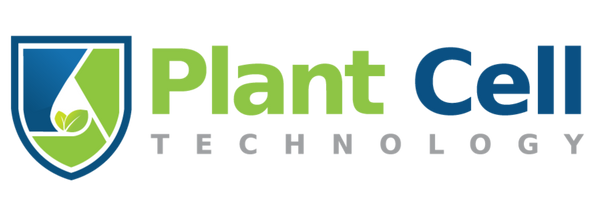Table of Contents
Contaminated Water
More than 70% of the earth’s surface is covered with water. The human body consists of between 50 and 65% water. We all know water is a prerequisite for life - animals, humans, and plants all need water to grow, survive, and thrive.
However, despite being one of the most necessary elements on earth, it should not be trusted blindly. Most people are conscious about drinking safe and clean water, but how much attention do you pay to the water you feed your plants?
A plant’s roots typically absorb water, and it is then circulated via its own vascular system. The water travels through the plant into the stems and leaves and all the way to the tips of the tallest buds. If the water is contaminated, your plant is likely to contract a disease, virus, or fungi. While not all of these are malicious, they could pose a threat to the plant’s health. Plants that have been contaminated from water could have discoloration, stunted growth, or die.
Most water from the municipal or city is tested and strictly monitored. With this assumption, the water should be fit for consumption (for both animals and plants). If the water comes from a rain collection or other source, it could spread disease throughout your cultivation.
Polluted water is one of the chief causes of disease in plants. There are several reasons for polluted water, one of which is the fertilizer run-off from crops. Most fertilizers contain high amounts of nitrogen, and if this nitrogen-filled water reaches your plants, the leaves may discolor, and you could become sick if you ingest these plants. Microorganisms and pathogens that cause significant concern for humans, such as E-Coli, Hepatitis A, Listeria, and Salmonella, can be troublesome for plants too.
Many gardeners have begun using collected rainwater for their plants; however, this eco-friendly method could pose problems too. One such issue is that run-offs from roofs could cause heavy metal contamination. If you are collecting rainwater in a tank or barrel, be sure to clean it at least once a year using water and bleach. Before you use water for your plants, invest in a water testing kit, pump, or filter so that you are sure your plants will be healthy and your yield hefty.
You can never guarantee that your plants will be free from contamination, but there are several ways to handle this. The most effective way is to find a quality plant preservative mixture to use for your culturing. A quality PPM will help to provide your plants with the correct hormones and nutrients, while helping to prevent contamination from both airborne and waterborne microbial contamination.
Where do Waterborne plant pathogens come from?
Plants can contract waterborne pathogens from various sources, including run-offs, irrigation sources, or even the soil itself. If recycled irrigation water is used, then your greenhouse plants could be exposed to inoculum.
Recirculating irrigation water can also be a source of two different water molds; Pythium and Phytophthora. Your plants can be severely damaged after just a couple of days of exposure to these types of water molds.
Plant tissue culture processes must strictly adhere to stringent protocol. Otherwise, contamination is more likely to occur. If you’ve followed strict sterilization procedures and have gathered your initial tissue for culturing from a healthy source, then you could be safe.
However, even in the strictest observation of the procedure, contamination can occur. What do you do if contamination does occur?

How to Deal with Waterborne Plant Pathogens
Even though cell culture and plant tissue culture are performed under aseptic conditions, contamination can still occur.
In an effort to prevent or even to treat existing contamination, some cultivators use antifungal and antibacterial antibiotics. The antibiotics should either be heat-resistant and added to the cell culture before autoclaving in order to prevent microbial growth, or, the antibiotics should be added after autoclaving the media if they are not heat resistant.
However, many cultivators use plant preservative mixture instead of antibiotics to prevent microbial growth, as plant preservative is said to be a healthier and more sustainable alternative to antibiotics.
What is PPM (Plant Preservative Mixture)?
PPM is a broad-spectrum biocide and preservative used in tissue culture to prevent contamination.
Plant Preservative Mixture is used in tissue culture to combat contamination (airborne,
Waterborne, human contact, and even endogenous). When it is used correctly, it halts the growth of both fungi as well as bacterial spores. When it is used at the recommended dosage, in vitro growth is not disrupted. Moreover, the heat-stable nature of the mixture means that it can be autoclaved with media.













Join the conversation
Your email address will not be published. Required fields are marked